Nikon D3100 Review
Nikon D3100
Nikon upgrades the best-selling D3000 to create its most fully featured entry level model to date. Is it the most accessible, best value and best performing DSLR in its class?

Verdict
Key Specifications
- Review Price: £468.30
Following its release, Nikon proudly claimed its D3000 to be the best selling digital SLR in Europe. Its successor therefore, the D3100, has the unenviable job of avoiding dropping the ball. No pressure then.
Fortunately for its maker and those looking for an affordable first DSLR, initial impressions are good. The D3100 incorporates a DX format CMOS sensor and is targeted at those trading up from a compact or bridge camera for the first time, as well as families wanting a decent capture device for pics of their tots. 
Nikon seems to want to make this one count: up until the higher end D7000 was announced in the latter stages of 2010, the D3100 was its first DSLR to introduce Full HD video capabilities to its range. This is captured at 24 frames per second and in widely accessible MPEG4 format, which here gets its own camcorder-style record button. The D3100 goes up against the EOS 500D/550D from Canon, to name its most direct competitor.
Like rival starter DSLRs from Sony, Nikon has also included an ‘Enhanced Guide’ on the D3100 as a notable extra option on the chunky shooting mode dial. This includes 13 options that illustrate the type of creative pictures that can be taken with the camera and enables the required options and settings to be selected within the Guide mode. Thus it’s commendably a bit more than just a substitute for reading the accompanying literature.
Furthering ease of use, its largish 3in LCD screen is equipped with Live View and can be deployed as an aid to framing and manual focusing, as an alternative to the traditional optical viewfinder ranged above. The D3100 can be bought body only, or equipped with an 18-55mm zoom out of the box for under £100 extra, a jack of all trades option regularly shipped out to beginners but here also having the advantage of offering image stabilisation or ‘Vibration Reduction’ (VR) as Nikon calls it. This is a bonus because, like Canon, none of Nikon’s DSLRs feature body-integral anti-shake.
Not much larger than a bridge camera, starter digital SLRs are inevitably more compact than their body toughened, weather-proofed semi pro big brothers and the D3100 is no exception. However the build feels solid – lightweight yet robust with it, particularly with the 18-55mm lens attached, and not obviously plastic-y.
One area that suffers in the need for the DSLR to appear unthreateningly compact to newcomers is the hand grip however, being smaller and less comfortable than we would have liked. You can curl three fingers around it, but it’s a squeeze. This leaves the forefinger hovering over the shutter release button, located on the forward slope of the grip, and the thumb resting on a small rubberised pad at the back, or more likely the command dial just above. There’s no time saving front command dial though, as on higher-end DSLRs, nor is there a top-mounted LCD window for a quick glance at key settings.
The D3100’s chunky shooting mode dial, the width of a 10 pence piece, sits in its usual place, slightly backward slanted for more comfortable access via forefinger and thumb, slotting into each setting when turned with a definite ‘click’. So you’re unlikely to jog settings accidentally when lifting the D3100 out of your camera bag. The dial has the usual smattering of auto settings and enhanced subject specific options that will enable the less experienced to point and shoot to begin with and move on to experimenting with the creative quartet of program, aperture priority, shutter priority and manual as confidence and natural curiosity grows.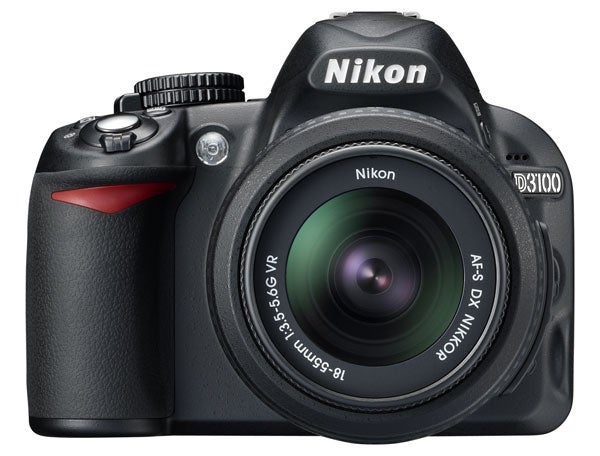
A stiff lever to the right of this provides access to the camera’s various drive modes, ranging through single shot, continuous burst, self-timer and, usefully for those attempting candid portraiture (whether humans or skittish wildlife), a ‘quiet shutter’ option. Although there is some mechanical sound with this last option selected, the camera ‘kills’ the beeping noise that usually signals focus and exposure have been determined – so your subject isn’t alerted to the fact that you’re about to fire off a shot before you do. We still get auto focus points flashing red in the viewfinder as a visual signal.
The shooting information displayed on the backplate LCD upon start up doesn’t automatically switch off as an eye is brought to the viewfinder, which would have been nice to avoid its slightly distracting glare, as the D3100 doesn’t feature nifty built-in eye sensors like the Sony Alpha series. It goes off of its own accord eventually but then ‘pops’ back into life as you half press the shutter release button having lined up a shot.
Like previous DSLR generations the look of the display is changeable – from ‘classic’ to ‘graphic’ and vice versa, whilst background colour can also be swapped to suit personal taste and aid legibility.
In general terms the Nikon’s buttons and controls are well labelled, practically sized and effectively implemented, plus fall under thumb or finger without any awkward dextrous feats required.
Also at the back of the D3100 we get a lever marked with a ‘LV’ icon for activating Live View with a convenient thumb flick, which encircles a red record button for video capture. It soon becomes apparent that Live View has to be first activated before pressing the video record button will actually do anything. In this way Nikon’s implementation of video capture doesn’t feel quite as intuitive as that of Sony’s Alpha A33 or A55 models, which have the advantage of featuring a translucent mirror mechanism, or famously mirror-less compact system cameras such as the Panasonic Lumix DMC-GF2 or Olympus Pens – a threat to entry level DSLRs in themselves. The result is that they don’t need their own mirror to actually (and audibly) flick out of the way first, as on the D3100, so it’s a more intuitive case of ‘press and go’. 
The inevitable impression garnered is that in comparison the Nikon feels slower to get going for video capture, but admittedly, having the option of video at least – and the support of a much broader range of system lenses than everyone but Canon can provide – is still a big plus in the DSLR’s favour. There no actually dedicated video mode on the top plate shooting dial, but once the lever is flipped and the record button pressed and D3100 users can be filming whichever stills mode might otherwise have been selected at the time. That much is intuitive.
For shooting stills though the D3100’s response times are impressively swift. A flick of the on/off lever ergonomically encircling the shutter release button and users can be up and taking their first photograph as fast as their forefinger can switch places to the adjacent control. In standard drive mode/s the shutter fires with a clunk loud enough to signal to the user a shot has been taken. Shutter lag is nigh imperceptible.
This being a Nikon, there’s the option to capture humble JPEG or unprocessed NEF files (the Nikon Raw format). There’s also the ability to tweak the look of your shots in camera rather than edit after downloading, via standard issue Picture Control settings, with standard, natural and vivid getting the most use from us over our two week test period. Though we found that the standard setting produced perfectly naturalistic results itself, the vivid option is there to boost reds, blues and greens in particular when the photographer is faced with a rather dreary wintry day – though these colour tones can cause images to stray into almost pop art territory if you’re not too careful.
Of course this model has been constructed to hit a certain price point and there are features that we would have inevitably liked to have had to hand that aren’t here, such as a tilting LCD screen for a greater creative variety when it comes to lining up shots.
As with all kit lenses, in trying to be all things to all men, the supplied 18-55mm standard zoom may be no match for a dedicated prime, but at the same time it isn’t bad at all. If we’ve a grumble it’s that the results from our sensor and lens combo were generally a tad soft for personal taste. However we were really impressed with what this DSLR for beginners can do when faced with shooting in low light without flash. Almost unbelievably it was only really at the top whack expanded ISO setting of ISO12800 that we felt image noise/grain was starting to become noticeably intrusive. Check out our test examples over the next couple of pages to see for yourself.
Overall then, with the bonus of minimal effort and a shallow learning curve, Nikon has created a camera that emphasises ease of use as well, while offering a smattering of the latest must have technology.
Despite this, the Nikon D3100 DSLR doesn’t come across as ‘dumbed down’ in an obvious way, but rather provides gentle hand holding, if and when necessary, to enable the less experienced to up their photographic game.
”’Verdict”’
In summation then, the D3100 feels solidly constructed when gripped in the palm, is fast and responsive, and is capable of some sharp and colourful results thanks to combination of sensor and supplied 18-55mm test lens and is fairly priced. As such the D3100 is something of a no brainer choice for anyone who doesn’t already own a digital SLR, but desires the more professional in appearance results that such a set up can bring.

”Over the next few pages we show a range of test shots. On this page the full size image at the minimum and maximum ISO settings have been reduced to let you see the full image, and a series of full resolution crops have taken from original images at a range of ISO settings to show the overall image quality. These pictures were taken indoors using tungsten photoflood lighting. ”
—-

The full image at ISO 100.
—-
At ISO100 all is well with the D3100’s performance.
—-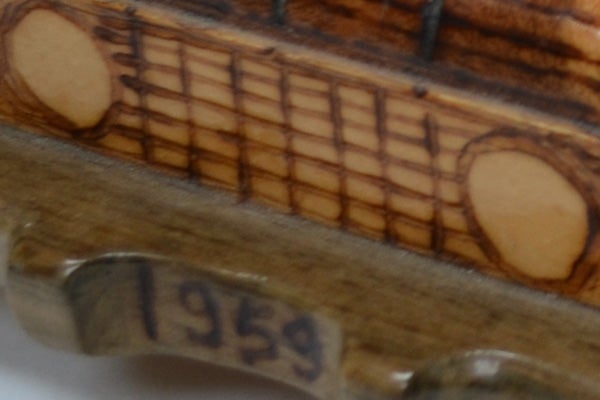
At ISO200 there’s similarly no image noise to report.
—-
We’re at ISO400 and a clean bill of health once again.
—-
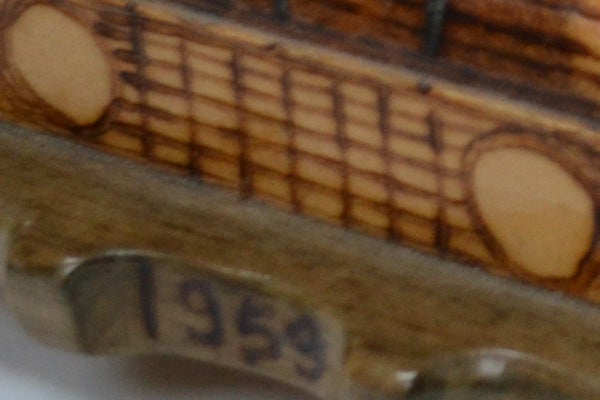
And so it continues at ISO800…
—-

…and ISO1600.
—-
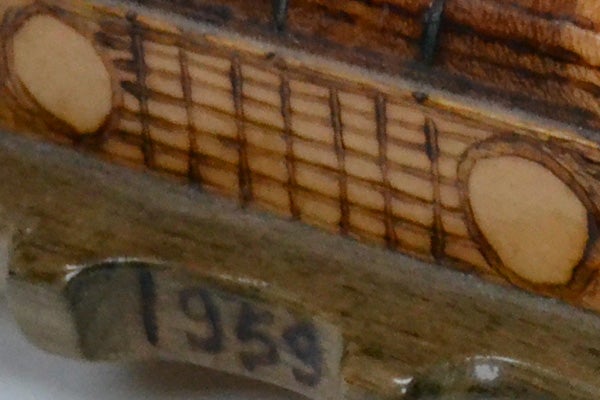
Remarkably, at ISO3200 only the sharpest pair of eyes would notice any difference between this and the previous two ISO settings.
—-

It’s only really at top whack ISO12,600 equivalent (Hi2 setting on the D3100) that we’re getting the tell-tale speckled appearance we’d expect to find creeping at ISO800 and above on lesser models.
—-

Here’s the full image at ISO12,600 (Hi2).
—-
”’A more general selection of test shots are revealed on this page and next to act as an evaluation of the Nikon D3100 in a variety of shooting conditions and with 18-55mm test lens attached for consistency.”’
—-
This close up hand held daylight shot reveals the level of detail achievable with the 18-55mm VR kit lens attached to the D3100. Whilst it’s not uniformly pin sharp and we’ve lost a little highlight detail to be picky, it’s a respectable showing nonetheless, revealing reflections in the water droplets and the crispness of the dying petals.
—–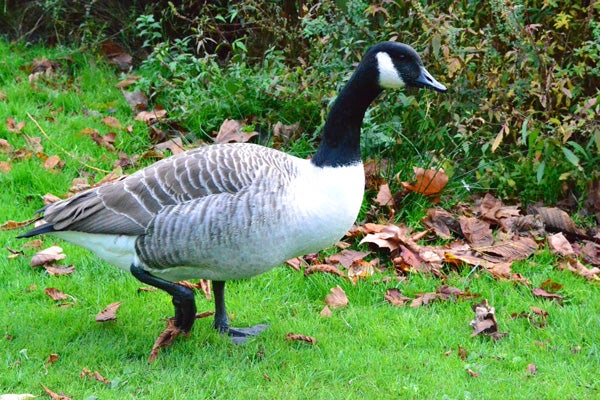
By contrast an image taken with the D3100 at the telephoto end of the supplied zoom, and with vivid picture mode selected to bring out the vibrancy of the green grass. Again we’ve lost some detail in the highlights, notably on the goose’s feathers.
—-
A wide angle shot revealing some softening towards the corners of the frame, but overall a pretty good level of sharpness. Having biased exposure on foreground detail, we’ve lost definition in a large expanse of sky.
—-
”’Here are some general test shots taken with the Nikon D3100 and 18-55mm VR-equipped zoom to give an idea of performance ability when it comes to image quality, dynamic range, colour rendition and the focal range provided.”’
—-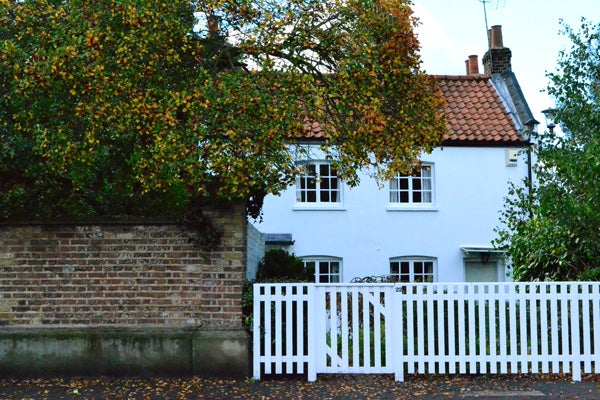
With the Vivid option selected from amongst the D3100’s Picture Control options, the natural foliage of this scene takes on a additional lusciousness, but also serves to highlight some obvious pixel fringing creeping into the top right hand corner of the frame
—-

Back to more naturalistic colour here and the DSLR has picked up on the lovely dappled effect of these leaves that appear almost painted on. Again some visible pixel fringing because of pointing the lens skyward and the contrast between light and dark, but that’s not what draws the eye
—-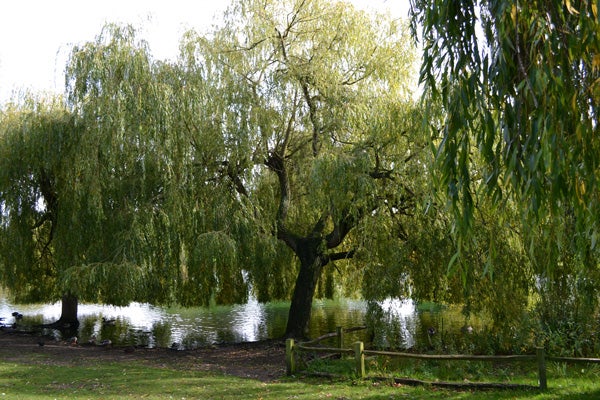
A wide angle shot with pretty uniform sharpness front to back. Albeit we’ve lost detail in the sky again. The colours here are the closest to the actual ones at the time of the test shots we’ve included
—-
Another colour-rich image to highlight the vibrant markings on the ducks and goose. There’s sufficient detail here to be able to pick out the delicate feather arrangement on the Egyptian goose, centre of frame
—-
Trusted Score
Score in detail
-
Value 9
-
Image Quality 8
Features
| Camera type | Digital SLR |
| Megapixels (Megapixel) | 14.2 Megapixel |
| Optical Zoom (Times) | N/Ax |
| Image Sensor | DX format CMOS imaging sensor |
| Optical focal length | Dependent on lens in use |
| Shutter speed | 1/4000 to 30 seconds in 1/3 EV steps |
| Auto focus | Nikon Multi-CAM 1000 autofocus sensor module with TTL phase detection, 11 focus points, AF assist illuminator |
| Manual focus | Yes |
| Max output resolution | 4608x3072 |
| Other resolutions | 3456x2304, 2304x1536 |
| Focus range | Dependent on lens in use |
| Exposure control | P, A, S, M |
| Exposure metering | Matrix, Centre Weighted average, Spot |
| Exposure compensation | 1/3 EV steps, +/- 5EV |
| Image Stabilisation | Optical |
| ISO settings | ISO100 to ISO3200 in 1EV steps, expandable to ISO12800 |
| LCD Monitor | 3-inch, 230k dot resolution |
| Viewfinder | Eye level pentamirror single lens reflex viewfinder |
| Flash range | Guide number of approximately 12/39 |
| Flash modes | Auto, Auto/Red eye reduction, Fill-flash off |
| White balance modes | Auto, incandescent, flourescent, sunlight, flash, cloudy, shade, manual |
| Drive modes | Single, continuous |
| Image formats | Raw, JPEG |
| Picture adjustments | Standard, Neutral, Vivid, Monochrome, Landscape, Portrait |
| Video (max res/format) | 1920x1080 pixels at 20fps, 1280x720 at 30fps |
| Movie length | Up to 4GB in size and 10 minutes in length |
| Self timer | 2, 10 secs |
| Memory card slot | SD/SDHC/SDXC and Eye Fi card compatible |
| Supplied memory | N/A |
| Batteries supplied | Lithium ion battery pack |
| Charger supplied | Yes |
| A/V output | HDMI |
| Charging/Computer Connection | USB 2.0 |
| HDMI | Yes |
| Manual | Basic printed guide, full manual on CD |
Physical Specifications
| Dimensions Width (Millimeter) | 124mm |
| Depth (Millimeter) | 96mm |
| Weight (body only) (Kilogram) | 505g with battery and memory card insertedkg |

